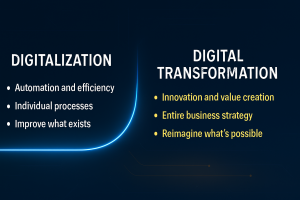
Let’s be honest, the traditional PMO isn’t keeping up.
Once the gold standard for structure and control, the classic Project Management Office (PMO) is now more often a bottleneck than a business enabler. It’s not that PMOs are inherently bad, but the way they’re often run? Slow. Rigid. Obsessed with templates and timelines over outcomes.
And in a world that moves fast, being slow is the kiss of death.
Why the PMO Has Lost Its Way
You’ve probably seen it yourself, endless meetings about process, checklists for the sake of checklists, and reporting that tracks every deliverable except the one that matters most: actual value.
It’s frustrating.
Because today’s businesses aren’t fighting for predictability. They’re fighting for relevance, speed, and strategic impact. And the old-school PMO just isn’t built for that.
Here’s what tends to go wrong:
- Decisions take ages because everything needs sign-off from five different people.
- Success is measured by ticking boxes, not by the value delivered.
- It resists change like a stubborn old car that won’t start in winter.
- And it’s often completely disconnected from the people making real-time business decisions.
So… what now?
It’s Time for a New Approach
If the PMO is on life support, what’s the alternative?
Enter the Strategic Execution Office, or SEO for short (no, not that kind of SEO, but wouldn’t it be nice if projects got ranked on Google?).
The idea is simple: ditch the obsession with process, and focus on impact. Run projects in a way that delivers real results, faster. Strategic alignment becomes the priority, and value creation is the heartbeat.
Here’s what that looks like in practice:
What Makes the SEO Different
- It’s All About Outcomes
The SEO cares less about whether a project finishes exactly on budget, and more about whether it moves the needle. Did it support a business goal? Did it solve a real problem? Did it make someone’s life easier? - It’s Built for Change
The world changes. So should your projects. The SEO embraces agility, not just as a method, but as a mindset. It’s okay to pivot mid-project. In fact, it’s smart. - It Tears Down Silos
Instead of project teams operating in isolation, the SEO creates bridges between departments. Marketing talks to IT. Finance talks to ops. Everyone knows why they’re doing what they’re doing. - It Puts Value at the Centre
Governance still exists, but it’s smarter. No more process for the sake of process. Governance becomes a way to protect value, not stifle progress. - It Uses Data to Steer
No more flying blind. The SEO makes decisions based on what the data is saying right now. Progress, performance, risk, it’s all visible, all the time.
So, How Do You Make the Switch?
Here’s the good news: you don’t need to tear down your entire PMO overnight. You can evolve it, one smart move at a time.
- Start by asking the tough questions. Is your PMO delivering actual value, or just activity?
- Reframe what success looks like. Move from tracking effort to measuring outcomes.
- Introduce agile where it makes sense. This isn’t about going full sprint if your team isn’t ready, it’s about being responsive.
- Update your governance model. Keep what works, toss what doesn’t, and align it all with strategic goals.
- Encourage collaboration. Make sure your teams talk to each other, really talk, and understand the big picture.
- Invest in visibility. Use tools and dashboards that give leaders the insight they need before things go sideways.
The Bottom Line
The PMO isn’t dead because it was wrong. It’s dead because it stopped evolving. And in a business world that rewards speed, clarity, and outcomes, the old ways just can’t keep up.
The Strategic Execution Office is what comes next, not a department, but a mindset shift. From process to progress. From ticking boxes to moving mountains.
Let’s stop managing projects. Let’s start driving strategy.






